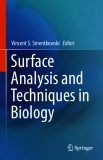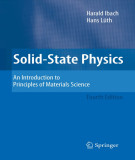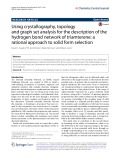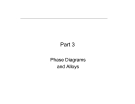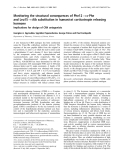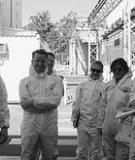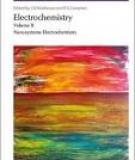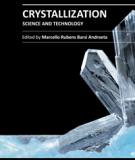
Chemical bonding in solids
-
Ebook "Chemical bonds outside metal surfaces (Physics of solids and liquids)" focuses mainly on the theory and concepts involved; however, it is intended for readers in chemistry, physics, and materials science who are not specialists in theory but nevertheless wish to learn more about this truly interdisciplinary area of theoretical science. The aim of the book is to present the way in which valence theory can be synthesized with the understanding of metals that has been gained over the last half century or so.
 291p
291p  coduathanh1122
coduathanh1122
 27-03-2024
27-03-2024
 2
2
 1
1
 Download
Download
-
Ebook "Surface analysis and techniques in biology" summarizes the main surface analysis techniques that are being used to study biological specimens/systems. The compilation of chapters in this book highlight the benefits that surface analysis provides. The outer layer of bulk solid or liquid samples is referred to as the surface of the sample/material. At the surface, the composition, microstructure, phase, chemical bonding, electronic states, and/or texture is often different than that of the bulk material.
 333p
333p  cotieubac1004
cotieubac1004
 15-03-2024
15-03-2024
 5
5
 0
0
 Download
Download
-
Ebook "Fuel cells and hydrogen storage (Structure and bonding, Volume 141)" brings together recent developments in the science and technology of fuel cells. The role of local structural effects and chemical bonding in the electrochemical performance of the new materials is discussed in detail. This work relies heavily on the use of quantitative differential electrochemical mass spectrometry (DEMS) for studying the mechanism of methanol electro-oxidation on platinum and platinum/ruthenium catalysts.
 215p
215p  manmanthanhla0201
manmanthanhla0201
 26-02-2024
26-02-2024
 4
4
 2
2
 Download
Download
-
Part 1 of ebook "Solid-state physics: An introduction to principles of materials science" provides readers with contents including: chemical bonding in solids; structure of solid matter; diffraction from periodic structures; dynamics of atoms in crystals; thermal properties; “free” electrons in solids; the electronic band structure of solids; magnetism;...
 250p
250p  dangsovu
dangsovu
 20-10-2023
20-10-2023
 4
4
 3
3
 Download
Download
-
(BQ) Ebook part 1 presents the following content: Chapter 1: Self-Assembling Cyclic Peptide-Based Nanomaterials; Chapter 2: Designer Nanomaterials for the Production of Energy and High Value-Added Chemicals; Chapter 3: Supramolecular Receptors for Fullerenes; Chapter 4: Click Chemistry: A Quote for Function; Chapter 5: Supramolecular Interactions and Smart Materials: C–X…X′–M Halogen Bonds and Gas Sorption in Molecular Solids; Chapter 6: Application of Advanced Solid-State NMR Techniques to the Characterization of Nanomaterials: A Focus on Interfaces and Structure; Chapter 7: New Tools for ...
 248p
248p  runordie7
runordie7
 30-08-2022
30-08-2022
 9
9
 2
2
 Download
Download
-
This study has demonstrated the use of crystallography, topology and graph set analysis in the description and classification of the complex hydrogen bonded network of triamterene. The aim is to give a brief overview of the methodology used to discuss the crystal structure of triamterene with a view to extending the study to include the solvate, cocrystals and salts of this compound.
 19p
19p  vijiraiya2711
vijiraiya2711
 27-05-2020
27-05-2020
 21
21
 0
0
 Download
Download
-
Lecture Material science: Part 3 - Hase diagrams and alloys presented component – pure metal of which the alloy is composed; solute – component of solid solution present in minor concentration; solvent – component present in greatest amount; solubility limit – maximum concentration of solute that can dissolve in solvent; phase – a homogeneous portion of a system with uniform physical and chemical characteristics.
 80p
80p  connhangheo91
connhangheo91
 03-07-2014
03-07-2014
 57
57
 2
2
 Download
Download
-
A new human/rat CRH analogue has been synthesized using the Fmoc/tBu solid-phase synthetic protocol. The sequence ofthe new peptide differs from the original in two positions, 12 and 15, at which the native amino acids L-phenylalanine 12 and L-leucine 15 have been replaced by the nonprotein amino acids D-phenylalanine and a-aminoisobutyric acid (Aib), respectively. The high resolution three-dimensional solution structure of [D-Phe12, Aib15]CRH has been determined by 688 dis-tance constraints (656 meaningful NOE and 32 H-bonds distance limits) and 21 angle constraints. ...
 11p
11p  tumor12
tumor12
 22-04-2013
22-04-2013
 32
32
 2
2
 Download
Download
-
Chemical reactions (abiotic reactions) are “classical” chemical reactions that are not mediated by bacteria. They may include reaction processes such as precipitation, hydrolysis, complexation, elimination, substitution etc. that transform chemicals to other chemicals and potentially alter their phase/state (solid, liquid, gas, dissolved). Precipitation is the removal of ions from solution by the formation of insoluble compounds, i.e. a solid-phase precipitate. Hydrolysis is a process of chemical reaction by the addition of water.
 208p
208p  cao_can
cao_can
 29-12-2012
29-12-2012
 65
65
 15
15
 Download
Download
-
Among halogens, fluorine is quite characteristic and specific since it has the largest electronegativity (4.0 vs 3.5 for oxygen) and the sterically second smallest van der Waals' radius (1.35 ~ vs. 1.20/~ for hydrogen). A carbon-fluorine bond is also stronger than a carbon-hydrogen bond (485 kJ/mol vs 414 kJ/mol). Therefore, fluoro organic compounds have unique chemical and physical properties.
 243p
243p  maket1311
maket1311
 16-10-2012
16-10-2012
 50
50
 5
5
 Download
Download
-
Crystallization is one of the most ancient and interdisciplinary topics of research known to mankind. Crystals can be organic or inorganic and may be produced from melts, liquid solutions, vapors or even in solid state. Notwithstanding its inherently high complexity, the crystallization process is part of our everyday lives, from ice making in our homes to the most state-of-the-art chemical and electronic industry.
 0p
0p  cucdai_1
cucdai_1
 16-10-2012
16-10-2012
 79
79
 11
11
 Download
Download
-
The extraordinary ability of the chemical element carbon to combine with itself and other chemical elements in different ways is the basis of organic chemistry and of life. This chemical versatility also gives rise to a rich diversity of structural forms of solid carbon. This introductory chapter is an attempt to survey the very wide range of carbon materials that is now available with emphasis on chemical bonding and microstructure.
 566p
566p  khangoc2391
khangoc2391
 11-08-2012
11-08-2012
 62
62
 8
8
 Download
Download
CHỦ ĐỀ BẠN MUỐN TÌM









